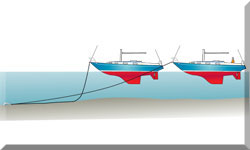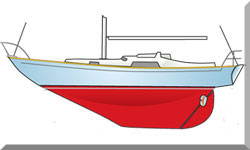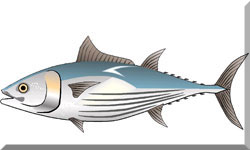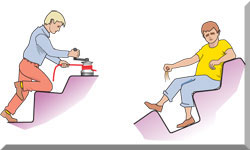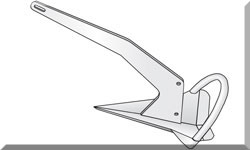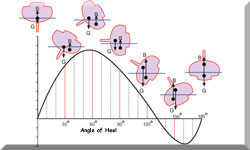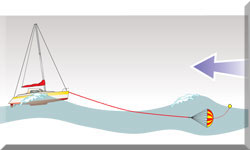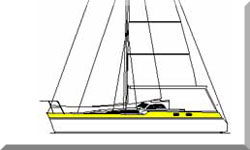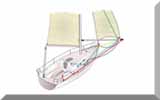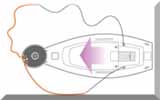How to Reef the Mainsail: Step-by-Step Instructions
Sailing is a pursuit that combines skill, knowledge and intuition. Among the essential skills that we all have to master is mainsail reefing—the art of reducing sail area in response to changing wind conditions. Proper reefing ensures not only the safety of the vessel and crew but also enhances the joy of sailing by maintaining control and comfort.
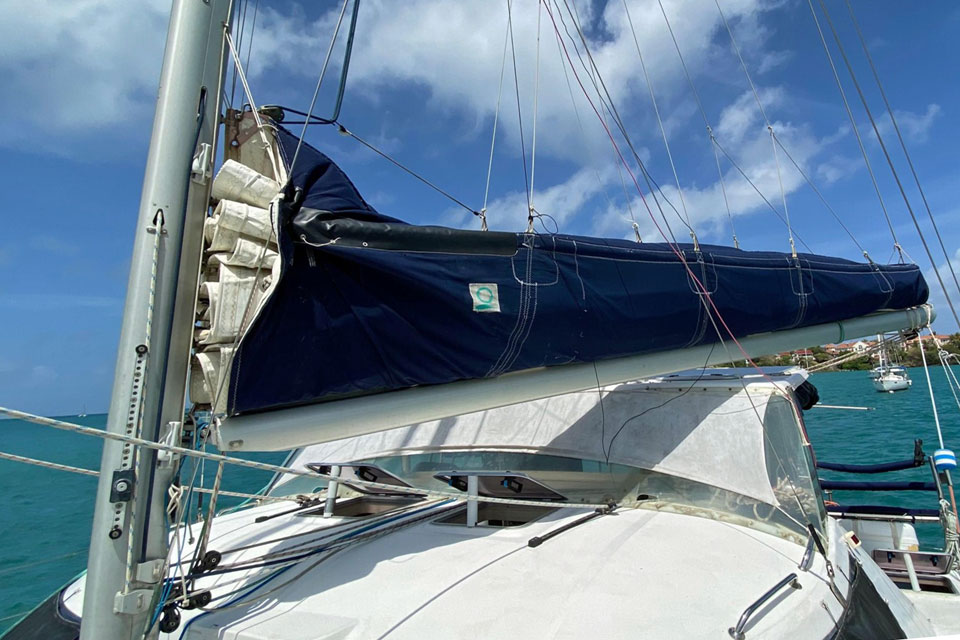 A slab-reefing mainsail contained within a stackpack
A slab-reefing mainsail contained within a stackpackThis comprehensive guide delves into the techniques of reefing the mainsail, focusing on the three common systems:
- slab (jiffy) reefing,
- in-boom reefing, and
- in-mast reefing.
Whether you're a seasoned sailor or new to the helm, this guide will equip you with the knowledge to handle your vessel confidently when the wind picks up.
 An in-mast furling/reefing system
An in-mast furling/reefing system
Understanding Mainsail Reefing
The Importance of Reefing
Reefing is a preventive measure that reduces the sail's surface area, allowing you to manage your sailboat effectively as wind strength increases. When the sails are overpowered, the boat can heel excessively, steering becomes challenging, and the risk of equipment failure rises. By reefing, you:
- Maintain Control: Reducing sail area prevents overpowering, ensuring the boat remains balanced and responsive.
- Enhance Safety: A well-reefed sail reduces the likelihood of accidents caused by sudden gusts or squalls.
- Protect Equipment: Minimizes stress on sails, rigging, and hardware, prolonging their lifespan.
- Improve Comfort: Less heeling leads to a more comfortable ride for everyone on board.
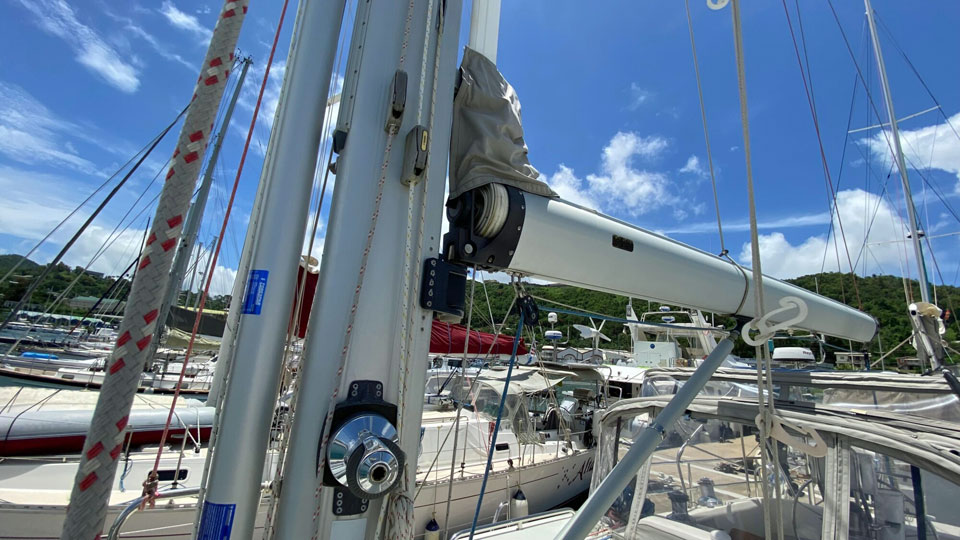 An in-boom furling/reefing system
An in-boom furling/reefing system
When to Reef
A common sailor's maxim states, "If you're thinking about reefing, it's time to reef." Recognizing the signs early is crucial:
- Increasing Wind Speeds: Whitecaps forming on waves or a noticeable rise in wind intensity.
- Excessive Heeling: The boat leans too much, making movement on deck unsafe.
- Weather Helm: The helm feels heavy, and the boat tends to head up into the wind.
- Difficulty Maintaining Course: Trouble keeping the boat on its intended path.
- Mainsheet Fully Eased: When the mainsheet is fully out, but the boat is still overpowered.
By reefing proactively, you avoid the risks associated with sudden weather changes and maintain a pleasant sailing experience.
Types of Reefing Systems
Overview of Reefing Methods
Understanding the different reefing systems helps you choose the one that best suits your sailing style and vessel:
- Slab (Jiffy) Reefing: The most traditional method, involving lowering the mainsail to pre-set points (reefing cringles) and securing it, effectively reducing the sail area in horizontal 'slabs'.
- In-Boom Reefing: The sail is rolled into a rotating boom, allowing for variable sail area reduction while maintaining optimal sail shape.
- In-Mast Reefing: The mainsail is furled inside the mast, offering seamless sail area adjustment without lowering or handling the sail on deck.
Advantages and Disadvantages
Understanding the pros and cons of each system guides you in their application:
1. Slab Reefing
Advantages:
- Simple and reliable with minimal mechanical complexity.
- Less expensive to install and maintain.
- Can provide a better sail shape compared to furling systems.
Disadvantages:
- May require going to the mast, which can be challenging in heavy weather.
- Physical effort is needed to handle the sail and secure reef points.
2. In-Boom Reefing
Advantages:
- Allows for precise reefing and maintains good sail shape.
- Reefing can often be done from the cockpit.
Disadvantages:
- Mechanically complex, increasing potential maintenance issues.
- Higher initial cost for installation.
3. In-Mast Reefing
Advantages:
- Ultimate convenience with reefing controlled entirely from the cockpit.
- No need to handle sail on deck, enhancing safety.
Disadvantages:
- Sail shape may be compromised, affecting performance.
- Susceptible to jams inside the mast, which can be difficult to resolve.
- More expensive and complex to maintain.
But are the complexities and costs of the two roller reefing systems outweighed by the benefits?
Preparation for Reefing
Safety Precautions
Before you begin reefing, safety should be your top priority:
- Crew Communication: Inform all crew members of the reefing plan. Clear communication prevents accidents.
- Personal Protective Equipment: Wear life jackets and, in rough conditions, harnesses tethered to jacklines.
- Secure Deck: Ensure the deck is clear of loose items that could cause tripping or entanglement.
- Assess Conditions: Evaluate weather conditions to determine the urgency and extent of reefing required.
Equipment Checklist
Having the right equipment in good condition is essential:
- Reefing Lines: Ensure all lines are free of wear, properly rigged, and accessible.
- Winches and Cleats: Check they are functioning smoothly to handle the load.
- Sail Hardware: Inspect cringles, reefing horns, and blocks for signs of corrosion or damage.
- Navigation: Keep your navigation tools at hand to maintain course during the manoeuvre.
- Communication Devices: Radios or signalling devices should be operational in case of emergencies.
Slab (Jiffy) Reefing
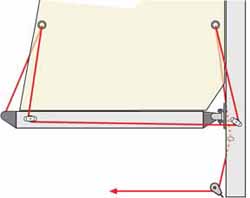 A single-line jiffy reefing system
A single-line jiffy reefing system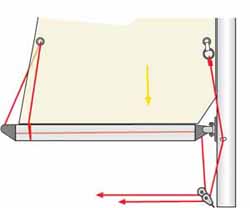 A double-line jiffy reefing system
A double-line jiffy reefing systemHow Slab Reefing Works
Slab reefing involves reducing the mainsail area by lowering it to predetermined points along the luff (front edge) and leech (back edge), then securing it. The sail is effectively shortened, creating a smaller sail area to suit stronger winds. The reefed section of the sail is contained atop the boom by lazyjacks.
The slabs can be pulled in by either a single line or a double line system.
Step-by-Step Instructions
1. Prepare the Boat
- Head Into Wind: Turn the bow into the wind to luff the mainsail, reducing wind pressure and making it easier to handle.
- Secure the Helm: Lock the wheel or have a crew member maintain the heading.
2. Ease the Mainsheet and Vang
- Depower the Sail: Loosen the mainsheet to centre the boom and ease the vang to allow the boom to rise slightly, reducing tension on the sail.
3. Lower the Mainsail
- Release the Halyard: Slowly ease the main halyard until the reefing tack cringle is just above the boom.
- Manage the Sail: Ensure the sail lowers smoothly without catching on rigging or spreaders.
4. Secure the Tack Reefing Cringle
- Attach to Reefing Hook or Line: Place the tack cringle over the reefing horn at the gooseneck or secure it tightly with a reefing line.
- Ensure Firm Attachment: The sail should be snug against the mast to maintain sail shape and control.
5. Re-tension the Halyard
- Hoist Slightly: Tighten the halyard to tension the luff, ensuring the sail is properly set.
6. Secure the Clew Reefing Line
- Adjust the Clew: Pull in the reefing line at the clew (aft corner of the sail) to bring the clew reefing cringle down to the boom.
- Set Foot Tension: Secure the line to maintain appropriate tension along the foot of the sail.
7. Tie the Reef Points
- Manage Excess Sail: Use the reef points (small ties along the sail) to gather and secure the loose sail material. Tie them loosely to avoid stressing the sail fabric.
- Avoid Over-tightening: The reef points should support the sail's weight but not bear significant load.
8. Adjust Sail Controls
- Trim the Mainsheet and Vang: Tighten to achieve the desired sail shape and resume sailing.
- Fine-tune: Adjust the traveller and other controls for optimal performance.
In-Boom Reefing
Understanding In-Boom Reefing
In-boom reefing systems roll the mainsail into a modified boom, allowing for variable reefing without the need to lower the sail. This method maintains better sail shape and can often be operated from the safety of the cockpit.
Step-by-Step Instructions
1. Position the Boat
- Choose a Safe Point of Sail: A close reach reduces wind pressure while keeping the sail filled enough for control.
- Maintain Steady Course: Ensure the helm is steady to avoid unexpected movements.
2. Ease Sail Controls
- Mainsheet and Vang: Loosen to allow the boom to adjust as the sail rolls in.
- Halyard Tension: Ease slightly to facilitate smooth rolling without the sail collapsing.
3. Engage the Reefing Mechanism
- Activate the Roller: Use the in-boom reefing handle or motor to start rolling the sail into the boom.
- Coordinate Halyard and Reefing: Lower the halyard incrementally as the sail rolls in to prevent excess tension or slack.
4. Monitor Sail Rolling
- Ensure Even Rolling: Watch for creases or uneven layers which can damage the sail.
- Pause if Necessary: Stop rolling to adjust the sail if issues occur.
5. Set the Desired Sail Area
- Determine Reefing Point: Roll in the sail until the appropriate amount is reefed based on wind conditions.
- Markings: Use pre-marked points on the boom or sail to gauge the amount of sail area.
6. Secure the System
- Lock the Boom: Engage any locking mechanisms to prevent the sail from unrolling.
- Adjust Controls: Tighten the halyard and outhaul to tension the sail properly.
7. Resume Sailing
- Trim the Sail: Adjust the mainsheet, vang, and traveller for optimal sail shape.
- Observe Performance: Monitor the boat's handling and make necessary adjustments.
In-Mast Reefing
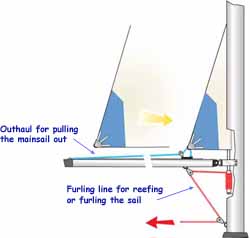
How In-Mast Reefing Operates
In-mast reefing allows the mainsail to be furled inside the mast vertically. This system offers convenience and safety by enabling reefing operations from the cockpit, though it requires careful handling to prevent sail damage.
Step-by-Step Instructions
1. Prepare the Vessel
- Maintain an Appropriate Course: Keep the boat on a close reach or head to wind to reduce sail pressure.
2. Ease Controls
- Mainsheet and Vang: Loosen to reduce load on the sail.
- Outhaul: Release gradually to allow the sail to move toward the mast smoothly.
3. Initiate Furling
- Operate Furling Control: Use the furling line or electric mechanism to roll the sail into the mast.
- Coordinate Outhaul and Furling: Adjust both controls in tandem to ensure even furling.
4. Monitor the Sail
- Watch for Jams: Be vigilant for signs of the sail catching or creasing.
- Stop if Necessary: If resistance is felt, pause and resolve the issue before continuing.
5. Adjust Sail Area
- Partial Reefing: Continue furling until the desired amount of sail is stowed.
- Use Markings: Reference marks on the outhaul can guide you to consistent reefing points.
6. Secure and Tension
- Lock Mechanisms: Ensure all furling controls are secured to prevent unintended movement.
- Re-tension Outhaul: Tighten to maintain proper foot tension and sail shape.
7. Resume Sailing
- Trim as Needed: Adjust the mainsheet and vang for the new sail configuration.
- Check Performance: Ensure the boat handles well and make any necessary refinements.
Tips for Efficient Reefing
- Practice Makes Perfect: Regularly practice reefing in calm conditions to build familiarity.
- Mark Your Lines: Use coloured tapes or markers on halyards and reefing lines to indicate reef positions.
- Stay Organized: Keep lines clear and untangled to prevent delays during reefing.
- Communicate Clearly: Use clear, concise commands with your crew to coordinate actions.
- Anticipate Weather Changes: Monitor forecasts and adjust sails proactively.
- Maintain Equipment: Regular checks prevent unexpected failures when reefing.
Maintenance and Troubleshooting
Caring for Your Reefing System
- Regular Inspections: Check all components for signs of wear, corrosion, or damage.
- Clean After Use: Rinse saltwater from hardware and sails to prevent deterioration.
- Lubricate Moving Parts: Apply appropriate lubricants to furling mechanisms, blocks, and winches.
Handling Issues and Repairs
Dealing with Jams:
- In-Mast Furling: If the sail jams, ease all tension and attempt to unfurl slightly before retrying.
- In-Boom Furling: Ensure the boom angle is correct; too much or too little angle can cause issues.
Broken Lines or Hardware:
- Carry spare lines, shackles, and tools onboard for quick repairs.
- Replace worn lines at the first sign of fraying to prevent failure during critical moments.
Professional Maintenance:
- Schedule regular servicing with a qualified marine technician, especially for mechanical reefing systems.
Next:
.........................
I wrote this article using GPT-4, OpenAI’s large-scale language-generation model, as a research assistant to gather information, summarize research findings, and provide suggestions for the content and structure of the article.
Dick McClary, creator and owner of sailboat-cruising.com
.........................
Recent Articles
-
Is Marine SSB Still Used?
Apr 15, 25 02:05 PM
You'll find the answer to this and other marine SSB-related questions right here... -
Is An SSB Marine Radio Installation Worth Having on Your Sailboat?
Apr 14, 25 02:31 PM
SSB marine radio is expensive to buy and install, but remains the bluewater sailors' favourite means of long-range communication, and here's why -
Correct VHF Radio Procedure: Your Questions Answered
Apr 14, 25 08:37 AM
Got a question about correct VHF radio procedure? Odds are you'll find your answer here...

